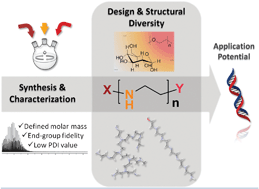Poly(ethylene imine)s (PEIs) are widely used in different applications, but most extensively investigated as non-viral vector systems. The high ability of cationic PEIs to complex and condense negatively charged DNA and RNA combined with their inherent proton sponge behavior accounts for the excellent efficiency in gene delivery. Further chemical modifications of the polymer expand the application potential, primarily aiming at increased transfection efficiency, cell selectivity and reduced cytotoxicity. Improvements in the synthesis of tailor-made PEIs in combination with new in-depth analytical techniques offer the possibility to produce highly purified polymers with defined structures. The contemporary strategies towards linear and branched poly(ethylene imine)s with modified surface characteristics, PEI-based copolymers as well as conjugates with bioactive molecules will be discussed. In this regard, the versatile branched PEIs have been successfully modified in a statistical manner, whereas the linear counterparts open avenues to design and synthesize well-defined architectures, in order to exploit their high potential in gene delivery.

You have access to this article
 Please wait while we load your content...
Something went wrong. Try again?
Please wait while we load your content...
Something went wrong. Try again?


 Please wait while we load your content...
Please wait while we load your content...